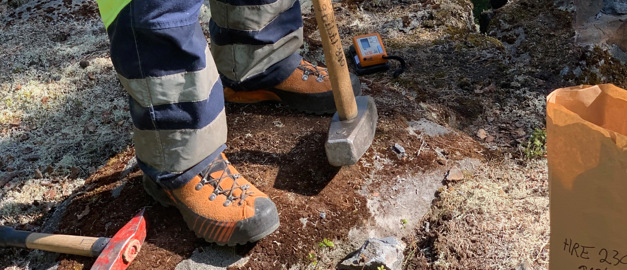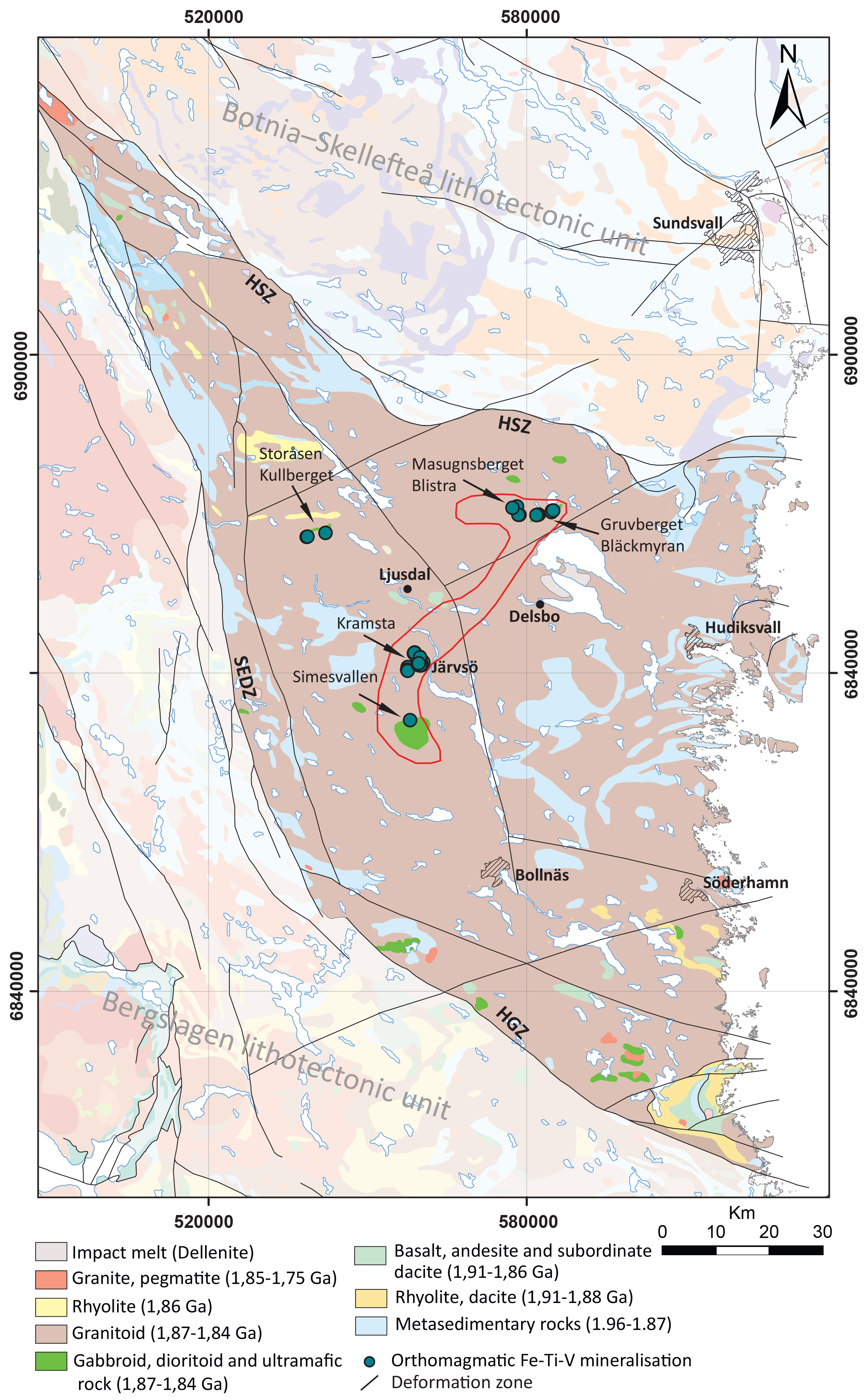
Photo: Helge Reginiussen
Investigation of vanadium bearing mafic intrusions in the Ljusdal lithotectonic unit
The Geological Survey of Sweden (SGU) is producing new data from iron-titanium-vanadium mineralisations in mafic intrusions in the area around Ljusdal, Järvsö and the Dellen lakes in Gävleborg County.
Vanadium and titanium are both critical raw materials according to the latest EU assessment and the purpose of the project is to produce geological and geophysical information from mafic intrusions in Gävleborg County with respect to mainly vanadium, but also titanium and iron.
The physical properties of the specific rocks, the content of metals and minerals and how and when these were formed, are being investigated.
The project is part of SGU's geological mapping plan for 2021–2027.
Simplified map adapted from the SGU bedrock database in scale 1:1000 000 showing the Ljusdal lithotectonic unit and regional ductile structures HSZ: Hassela Shear Zone, SEDZ: Storsjön-Edsbyn Deformation Zone, HGZ: Hagsta Gneiss Zone. The area is dominated by 1.87–1.84-billion-year-old granitoids (brown colour) belonging to the Ljusdal Batholith. Red polygon outlines the Dellen–Ljusdal Fe-Ti-V metallogenic area. Important mineralisations and deposits are indicated by arrows.
The bedrock of the Ljusdal lithotectonic unit is dominated by the Ljusdal batholith (1.87–1.84 billion years old), which mainly consists of gneisses and deformed rocks with granitic to granodioritic compositions. Additionally, in the Ljusdal lithotectonic unit, mafic intrusions containing iron-titanium-vanadium mineralisations occur, including in the Sumåssjön–Dellen–Ljusdal-Järvsö area, which constitutes a so-called metallogenetic area for this type of mineralisation (fig. 1). In magmatic iron-titanium-vanadium mineralisations, also called orthomagmatic or mafic iron-titanium-vanadium mineralisations, vanadium is often concentrated in the mineral magnetite. Globally, this type of mineralisation is the most important primary source of vanadium.
Project Timeline
The project started in 2022 and will be completed in the first half of 2025. Geological, lithogeochemical, and geophysical data collected during the project are continuously published in SGU's databases. Preliminary results were published in an interim report in 2023, and a final report will be released in 2025.
Last reviewed 2025-02-28

